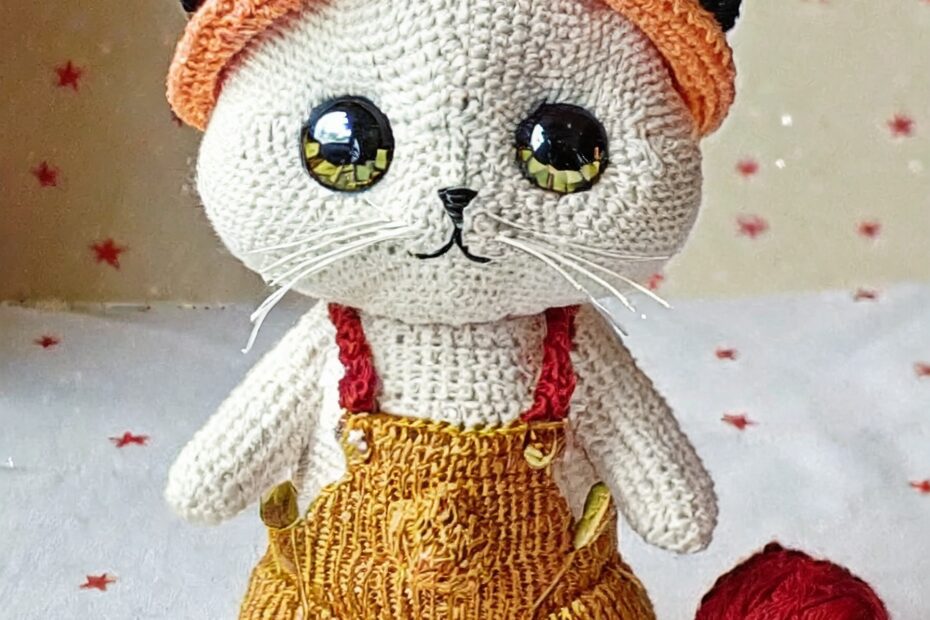Even the most experienced crocheters occasionally run into problems while making amigurumi. Whether you’re just starting out or have years of stitching under your belt, mistakes happen—and that’s okay! The good news is that most errors in amigurumi can be fixed without unraveling the entire piece. By understanding what to look out for and learning how to correct your work, you can save time, reduce frustration, and still end up with a beautiful finished toy.
In this guide, we’ll walk you through the most common amigurumi mistakes and how to fix them with practical tips and tricks.
Uneven Stitch Tension
One of the most frequent issues in amigurumi is uneven stitch tension, which can cause your toy to look lumpy or distorted. This usually happens when switching between tight and loose stitches unintentionally. To fix this, make sure you’re holding your yarn consistently and try to practice with sample swatches before starting a new piece.
If you notice uneven tension mid-project, you can try gently tugging or massaging the stuffed area to even it out. Light blocking may also help in certain cases, especially with cotton yarn. For future projects, using a hook size that matches your natural tension can prevent this issue altogether.
Gaps Between Stitches
Gaps often appear when the stitches are too loose or the stuffing is too tight. If you see noticeable holes between stitches, you can go back and add extra single crochets to tighten the area or reinforce it with additional stitching.
Another way to prevent gaps is to use a smaller crochet hook than you would typically use for the same yarn. This makes the fabric denser and more suitable for stuffing.
Miscounted Stitches
Losing track of your stitch count is very common, especially in circular amigurumi projects. If your piece is growing unevenly or looking asymmetrical, you’ve likely added or missed a stitch.
To fix this, first identify where the mistake occurred. If it’s close to the current round, you can rip back a few stitches and correct the count. For earlier rounds, you can sometimes correct the shape by increasing or decreasing a stitch strategically in a later round. To avoid this problem, always use a stitch marker at the beginning of each round and count your stitches regularly.
Crooked or Lopsided Shapes
If your amigurumi toy is turning out crooked, the culprit is often inconsistent increases and decreases. Make sure you’re spacing these evenly throughout the round. Check the pattern instructions carefully and count the stitches between increases or decreases.
To fix a slightly lopsided shape, try reshaping it gently while stuffing. You can also add or reduce stuffing on one side to help balance the figure.
Visible Seams or Joins
Joining rounds or attaching limbs can sometimes leave visible seams, making your finished toy look less polished. To minimize this, use the invisible decrease technique instead of the standard decrease. When attaching limbs, use the ladder stitch or whip stitch for a smoother, less noticeable seam.
If you’ve already sewn something in place and it’s misaligned, don’t be afraid to undo the seam and try again. It’s better to take the time to fix it than to settle for a result you’re not happy with.
Stuffing Issues
Overstuffing can make your toy too firm and stretch out the stitches, while understuffing can leave it limp or misshapen. If you’ve already closed your project and notice stuffing problems, you can carefully reopen the seam, adjust the fill, and stitch it closed again.
Use small pieces of stuffing at a time, and shape the toy as you go. This allows for more control and avoids clumps. For long limbs or narrow parts, use a chopstick or the back of a crochet hook to push stuffing into tight spaces.
Uneven Facial Features
Eyes that aren’t aligned or a crooked mouth can really affect the expression of your amigurumi. To avoid this, always measure and mark facial features before attaching them permanently.
If safety eyes are misaligned and already attached, you may not be able to move them without damaging the piece. Instead, try adjusting the embroidery of the mouth or adding blush or eyebrows to balance the look.
For embroidered features, if you make a mistake, gently remove the yarn with a tapestry needle and try again. Practice on a swatch if needed to perfect your technique.
Mistakes are a natural part of the creative process. With patience and the right know-how, most amigurumi mishaps can be fixed—or even embraced as part of the toy’s charm. Every project teaches you something new, and each correction improves your skills.
The next time something goes wrong, take a breath, assess the problem, and remember: your crochet journey is just as valuable as the finished product. Keep stitching, keep learning, and most importantly—keep enjoying every loop and pull along the way.
